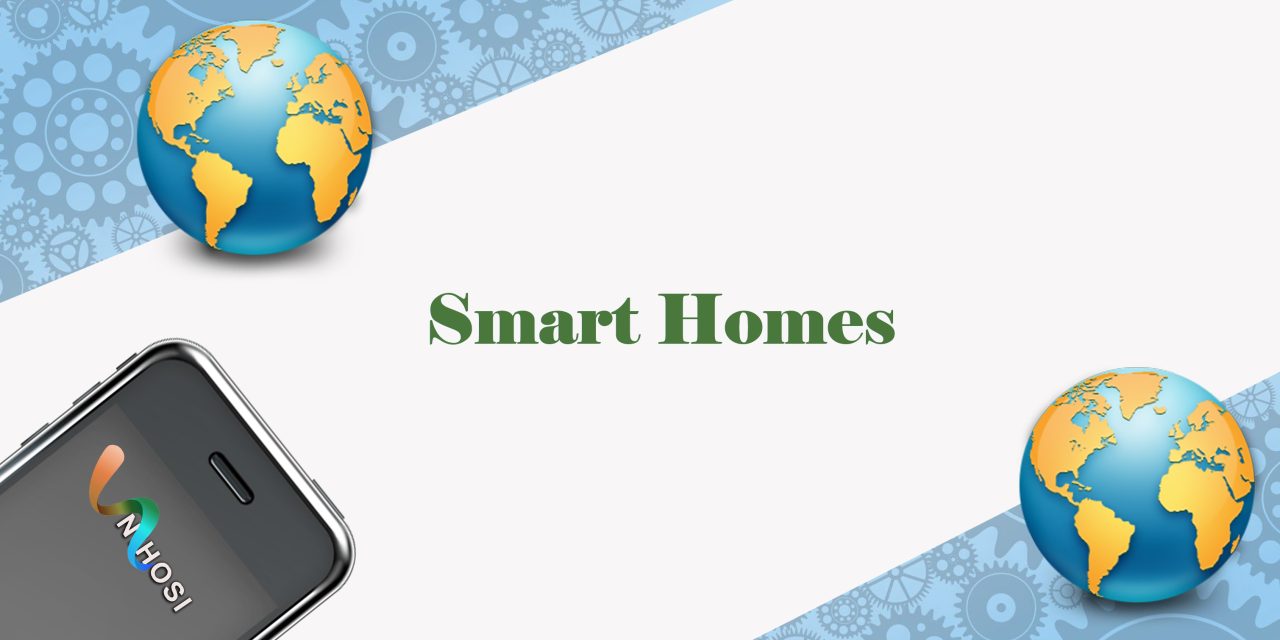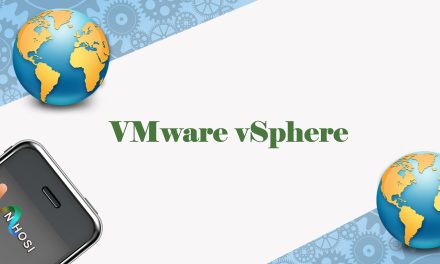In the digital age, where technology reigns supreme, our homes are not just brick-and-mortar structures providing shelter, they have transformed into responsive entities that adapt to our lifestyles. Known as ‘smart homes’, these are spaces where numerous devices and systems interact, adding a layer of convenience and control like never before. From voice-controlled assistants and automated security systems to intelligent lighting and heating setups, smart homes encapsulate a new way of living.
But as with all technological frontiers, the landscape of smart homes is in a constant state of evolution. It’s hard not to wonder – what does the future hold? Will our homes become more in sync with our routines? Could they become more efficient, sustainable, or even, intuitive? In an era where convenience is king and sustainability is the need of the hour, the future of smart homes offers intriguing possibilities.
This comprehensive article explores the innovative technologies and advanced automation that are set to redefine the future of smart homes. We will delve into emerging trends, potential societal impacts, and the benefits that this rapid evolution in technology could bring to our everyday lives. As we embark on this journey into the future of smart homes, we welcome you to join us in this exploration of technology’s potential to reshape our living spaces and lifestyles.
Smart Homes: A Quick Overview
The concept of smart homes has taken centre stage in the arena of domestic living, intertwining technology with convenience to revolutionise our day-to-day experiences. A smart home is essentially a living space where multiple devices, appliances, and systems are interconnected, communicating with each other and the homeowner, creating a networked environment.
These devices, ranging from smart thermostats and refrigerators to automated security systems and voice-controlled assistants, are often controlled remotely through smartphones, tablets, or computers. Alternatively, they can be controlled in-house using Artificial Intelligence (AI) systems like Amazon’s Alexa, Google Assistant, or Apple’s Siri.
In a smart home, you can set your thermostat to heat up your home before you arrive or program your lights to mimic your routines when you’re away. You can even ask your voice assistant to play your favourite playlist, check the weather, or make a shopping list. These functions are just the tip of the iceberg when it comes to smart homes.
But it’s not just about convenience. Smart homes are also about maximising efficiency, saving energy, and enhancing security. For instance, smart thermostats can learn your routines and adjust the heating and cooling accordingly, saving energy in the process. Similarly, smart security systems can alert you to potential security breaches, provide remote access to surveillance, and even contact authorities in case of emergencies.
Smart homes represent the epitome of the Internet of Things (IoT) revolution. They are a perfect example of how multiple devices, when interconnected, can improve our lives, making our homes not just a place to reside but intelligent entity that responds to our needs and preferences. However, as exciting as the current state of smart homes may be, it’s the potential future developments that are truly awe-inspiring.
The Evolution of Smart Homes
The concept of smart homes isn’t new, though it’s implementation and widespread adoption have only taken place in recent decades. The evolution of smart homes has been nothing short of extraordinary, as advancements in technology have pushed the boundaries of what is possible within our domestic settings.
The Initial Stages
In the early stages, the idea of a ‘smart home’ was predominantly tied to luxury living, a novelty rather than a necessity. The first iterations of smart homes emerged during the late 20th century, with systems that offered rudimentary control over household appliances and features. These included basic automated systems like timed sprinklers, programmable thermostats, and simple home security measures.
The Introduction of the Internet of Things (IoT)
The game-changer in the evolution of smart homes was the advent of the Internet of Things (IoT). IoT refers to the interconnection of devices via the internet, allowing them to send and receive data. With IoT, a new realm of possibilities opened up for smart homes. Everyday appliances could now connect to the internet and be controlled remotely, marking a significant step in home automation.
Digital Assistants and the Rise of AI
The introduction of digital assistants like Amazon’s Alexa, Google’s Assistant, and Apple’s Siri further fuelled the development of smart homes. With voice commands, homeowners could now interact with their smart devices, playing music, checking the weather, setting reminders, and even controlling other smart home devices.
The Present State of Smart Homes
Today, the concept of smart homes has evolved beyond just remote control and digital assistants. Modern smart homes incorporate an extensive array of features such as advanced security systems with facial recognition, intelligent lighting and heating systems that adapt to homeowners’ routines, and smart appliances that self-diagnose and report maintenance issues. AI and machine learning have introduced a level of personalisation and convenience that was unimaginable a decade ago.
As we continue to push the boundaries of technology and innovation, the evolution of smart homes is far from over. The next wave of advancements is set to make our homes even smarter, shaping an exciting future for domestic living.
Where We Stand Today
Today, smart homes are not just about individual smart devices; they have evolved into a seamless ecosystem of interconnected devices that work harmoniously to cater to various aspects of domestic living.
The Age of AI Assistants
Digital assistants have become significantly more intelligent and versatile. Today’s AI assistants not only respond to commands but can also provide personalised suggestions based on our preferences and routines. Whether it’s recommending a recipe based on the ingredients in your smart fridge or suggesting a playlist based on your listening history, AI assistants have transformed how we interact with our homes.
Enhanced Home Security
Home security systems have also seen substantial advancements. The simple security alarms of the past have been replaced by comprehensive security systems that include features like facial recognition, movement detection, and live surveillance feeds accessible from anywhere in the world. Some systems can even distinguish between residents, visitors, and potential intruders, and act accordingly.
Energy-Efficient Smart Homes
With growing consciousness about sustainability, energy efficiency has become a key focus area in smart homes. Today, smart homes feature energy-efficient appliances, intelligent lighting and temperature control systems that adjust according to natural light and weather conditions and even smart meters that monitor and manage energy consumption.
Advanced Home Automation
Home automation now extends beyond simple remote control of appliances. Current smart home systems feature advanced automation capabilities where devices can communicate with each other. For example, your smart oven can preheat based on the recipe you’ve chosen on your smartphone, or your smart thermostat can adjust the heating based on the weather forecast.
Where we stand today is a result of years of technological advancements and innovations. However, as the pace of technological development accelerates, so does the evolution of smart homes. The future promises even more sophisticated, integrated, and intuitive smart home systems.
The Future of Smart Homes: Key Innovations and Trends
As we cast our eyes towards the future of smart homes, it’s evident that we’re on the cusp of a transformational shift. This shift will be driven by several key innovations and trends, pushing the boundaries of what we currently understand as ‘smart’.
Increased Integration and Interconnectivity
In the future, smart homes will become a seamless mesh of interconnected devices. We’re moving towards an era of ‘hyper-connected’ homes, where integration between different smart devices will be the norm rather than the exception. For instance, your smart refrigerator might not just inform you about a missing ingredient; it could also place an online order for it, or suggest alternatives based on what’s available.
Advanced AI and Machine Learning
The future of smart homes hinges on advancements in AI and machine learning. As AI becomes more sophisticated, smart home systems will offer personalised experiences that adapt to the habits and preferences of the user. For instance, your home might ‘learn’ your daily routines, optimising lighting, temperature, and even music to match your mood and preferences.
Energy-Efficiency and Sustainability
The drive for sustainability will greatly influence the future of smart homes. As the global focus on environmental consciousness increases, energy-efficient and eco-friendly solutions will become a staple in smart homes. Homes in the future will not just monitor and optimise energy use, but might also generate and store their own energy, using solar panels and other renewable energy technologies
Enhanced Security and Privacy
With the increased interconnectivity of smart devices, security and privacy will become critical. Future smart homes will employ advanced cybersecurity features to protect against potential breaches. Additionally, we can expect to see advanced biometric systems, like facial and voice recognition, becoming mainstream in smart home security.
Health Monitoring and Wellness
Health and wellness will become a key focus in the future of smart homes. Smart devices will be able to monitor various health parameters, suggest customised workouts, prepare healthy meals, and even alert medical professionals in case of emergencies. Essentially, our homes will play an active role in our health and well-being.
Advent of Smart Communities
The future of smart homes is not just about individual homes becoming smarter, but entire communities. We’re moving towards the development of smart communities, where homes are interconnected, sharing energy resources, security measures, and other community services, leading to more efficient, sustainable, and secure living environments.
The future of smart homes promises a world of possibilities, marked by increased comfort, efficiency, security, and personalisation. As technology continues to evolve, so will our homes, forever changing the way we live and interact with our domestic environments.
Conclusion
As we stand on the brink of the next wave of technological evolution, it’s clear that the smart homes of the future will be more than mere places of residence. They will evolve into intelligent ecosystems that augment our daily lives, making our routines more comfortable, efficient, and secure. From hyper-connectivity and advanced AI to energy efficiency and enhanced security, a multitude of innovative trends and technologies will shape this transformative journey.
What’s undeniable is that the smart homes of the future hold tremendous potential for improving not only our daily lives but also our societal and environmental responsibilities. They will allow us to live more sustainably, utilise resources more efficiently, and maintain a healthier and more balanced lifestyle.
As we gaze into the future, we must prepare ourselves to adapt and evolve with these changes. The future of smart homes is not a distant dream, but an approaching reality. And as this future unfolds, it brings with it the promise of a smarter, more connected, and more efficient way of life.
So, are we ready to embrace this exciting new chapter in the story of human progress? Only time will tell. But one thing is for sure – the future of smart homes is brighter, smarter, and more exciting than we can imagine.
Thank you for joining us on this journey into the future of smart homes. Let’s continue to explore, understand, and innovate as we move towards smarter, more sustainable living spaces. Together, let’s embrace the future of home living!
Please note: While we strive to provide the most accurate and up-to-date information, the field of technology is rapidly evolving. This article represents the state of smart homes and their future as of June 2023.











Subscribe To Our Newsletter
Join our mailing list to receive the latest news and updates from our team.
You have Successfully Subscribed!